Anyone who has ever tried to nail down start and end dates for the various ages of comics knows, it’s difficult to achieve consensus. And even though most of us mark June 1938 as the debut of the superhero, that doesn’t mean that there weren’t antecedents to Superman’s brand of derring-do. Welcome to Ten Things!
Whooshman-Bicarbonate Films, in conjunction with ‘An Amateur Comics Historian’, and ‘Time And Relative Dimensions In Comic Books’, Presents:
TEN PRE-SUPERHERO SUPER-TYPES!
10) THE SCARLET PIMPERNEL
Originally published in 1905, the adventures of Sir Percy Blakeney were derived from an earlier stage play. Set during the French Revolution of the late 1700s, this story is notable for originating one of the most important aspects of superherodom: The secret identity. With the help of his associates in the League Of The Scarlet Pimpernel, Sir Percy hides his swashbuckling alter ego behind the facade of a dim-witted layabout, presaging milquetoast Clark Kent of the 70s, useless playboy Bruce Wayne and dozens of others and pioneering one of the most important traditional superheroic tropes…
9) THE SCARECROW
Dating back to 1915, this proto-Batman is probably best known in America for the 1960s Disney adaptation, starring Patrick McGoohan of ‘The Prisoner.’ A pirate, swashbuckler, smuggler and general badass also known as The Reverend Doctor Syn (itself a killer nom de guerre), he set the tone for many a dark avenger of the night, including the later Phantom and Shadow…
8) CRIMSON CLOWN
Dating back to 1926 and originating from the same creator as legendary hero Zorro, (himself influenced by The Scarlet Pimpernel, feeding the cycle of heroism), The Crimson Clown was an updated Robin Hood archetype, robbing from corrupt rich and using the money to fund philanthropic efforts. Though not as popular as many of his pulp brethren, he is nonetheless memorable for his… shall we say, unique method of operations and costuming. (He also has no known connection to the villain from ‘Are You Afraid Of The Dark?’.)
7) G-8
From 1933 til roughly the end of the second World War, G-8 and his Battle Aces fought the good fight against criminals, mad scientists and the Axis powers. Though not as notable as Doc Savage of the titans of pulp, he nonetheless had a long run (over 100 issues) and enjoyed a renaissance during the pulp resurgence of the 1970s. Interestingly, his secret identity was never revealed…
6) PHANTOM DETECTIVE
Also dating back to 1933, the hero of ‘Phantom Detective’ magazine is actually known in his stories as just The Phantom, but the later Lee Falk-created jungle hero kind of owns that name these days. A brilliant detective , this Phantom’s stories also feature the use of a roof-mounted beacon to summon the hero, later adapted and/or stolen wholesale for use in the adventures of The Batman.
5) DR. OCCULT
Appearing in the fifth issue of the very first DC Comics publication (New Fun Comics) in 1935, the good Doctor was the work of Jerry Siegel and Joe Shuster, who later created Superman. Mostly a traditional detective, he wore a trench coat and slouch hat but also had supernatural powers. Interestingly, in one of his early adventures, he wears a cape and costume and even flies (all while in an alternate magical dimension), making him the direct precursor to Superman and the heroes that followed.
4) CAPTAIN MIDNIGHT
Originating on the radio in 1938, Captain Midnight migrated to comics, movie serials, the funny pages and eventually television, and is probably best remembered for his show’s syndicated sponsor, Ovaltine. Captain Midnight’s multiple iterations are among the earliest examples of separate adaptational continuities, leading to Marvel’s ‘Avengers’ film series and the multiple TV heroes of today. (Plus, his Fawcett Comics costume is one of the greats…)
3) THE AVENGER
By the time of the Avenger’s debut in the fall of 1939, a few notable superheroes were already in evidence (Superman, Batman and the Human Torch, among others.) The Avenger is a (slightly calculated) attempt to recapture the successes of Doc Savage and The Shadow by combining elements of both heroes into one. The grim-faced (in some continuities, he can’t move his facial features, instead reforming them like putty to hide his identity) hero is ended up being one of the last of the traditional only slightly larger than life pulp-type characters,
2) MANDRAKE THE MAGICIAN
Another Lee Falk joint from the funny pages, Mandrake made his debut in 1934. Using a lot of pulpy tropes, he nonetheless had super-villain antagonists, supernatural powers and even an evil twin brother. (Though his evil twin’s name iss Derek, which is something of a let-down.) Mandrake’s influence on later magical superheroes is obvious, from Doctor Strange’s facial hair to the suit-and-top-hat togs of Superman’s Action Comics #1 co-star Zatara, whose daughter Zatanna still plies her magical wares in the Justice League today…
1) POPEYE THE SAILOR
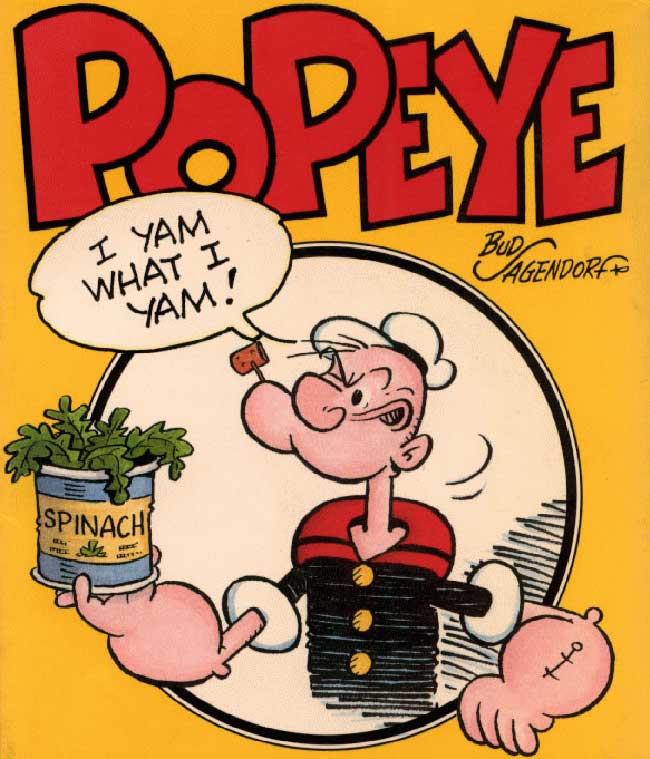
Thimble Theatre had been a regular on the comics page for ten years when the legendary sailor man first popped up in 1929, but he quickly became the breakout star of the piece. With super-strength, a specific weakness in his “powers” and his distinctive sailor’s uniform serving as a sort-of-costume, Popeye is but a hair’s breadth from being a superhero himself, and his pop cultural impact (and, not coincidentally, massive marketing potential) were the shape of things to come for the super-dupers of the world.
As with any set of like items, these aren’t meant to be hard and fast or absolutely complete, and certainly there are other early heroic characters who helped to shape the modern superheroic norms. (*coughTheShadowcough*) Fortunately, the comments section is there for just such an emergency, but, as always: Please, no wagering!
[signoff predefined=”PayPal Donation” icon=”icon-flag”][/signoff]


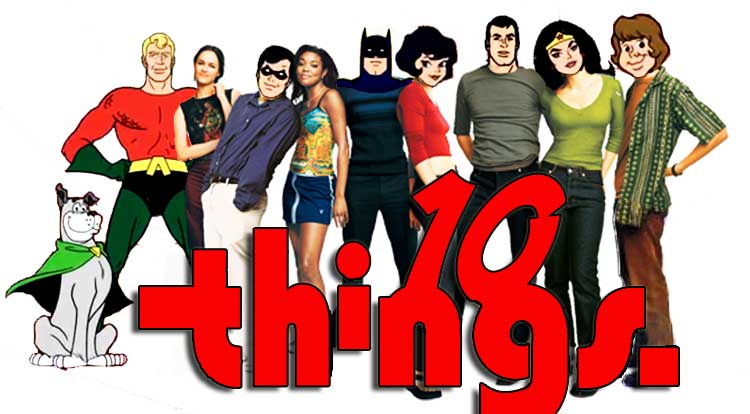
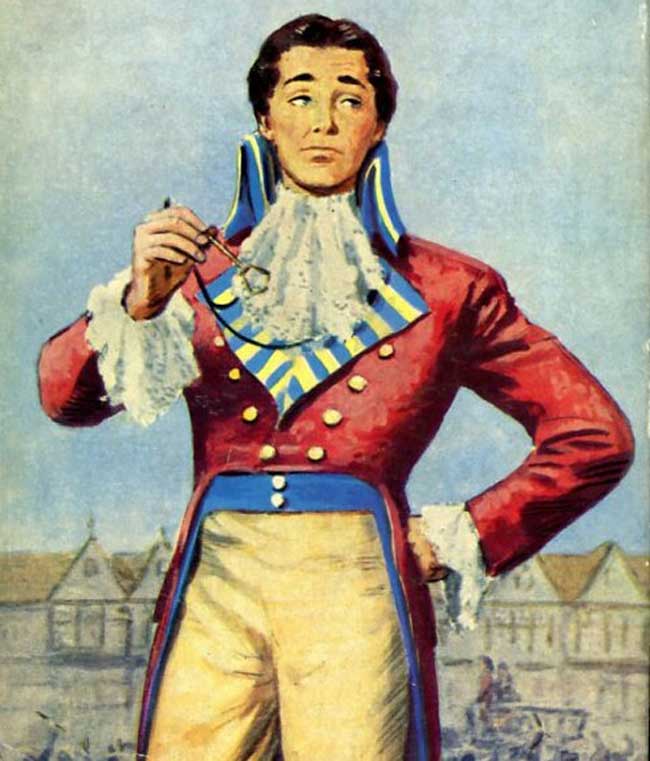
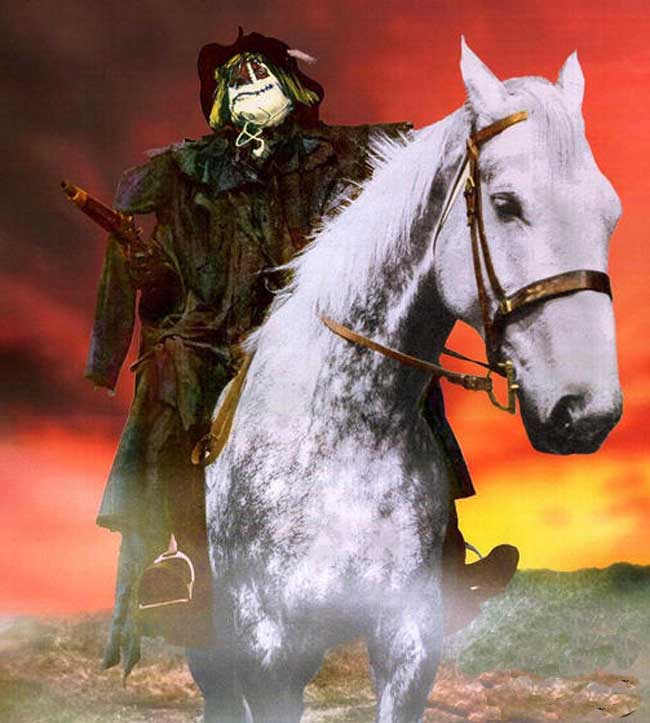

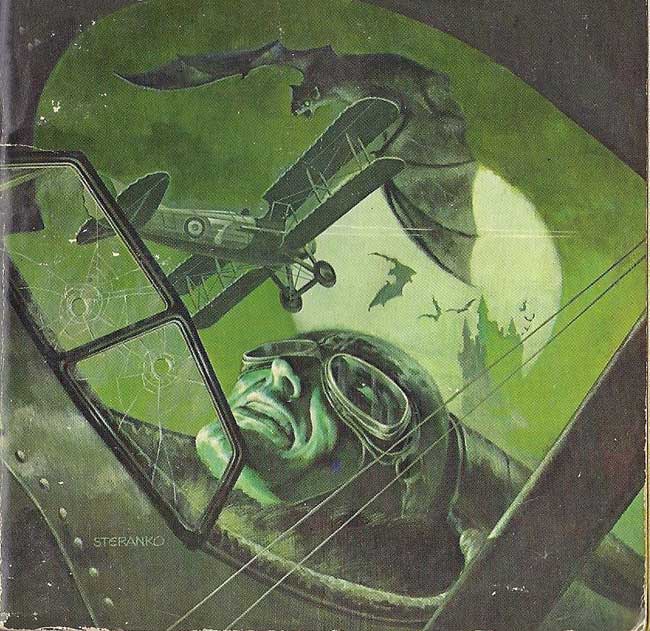
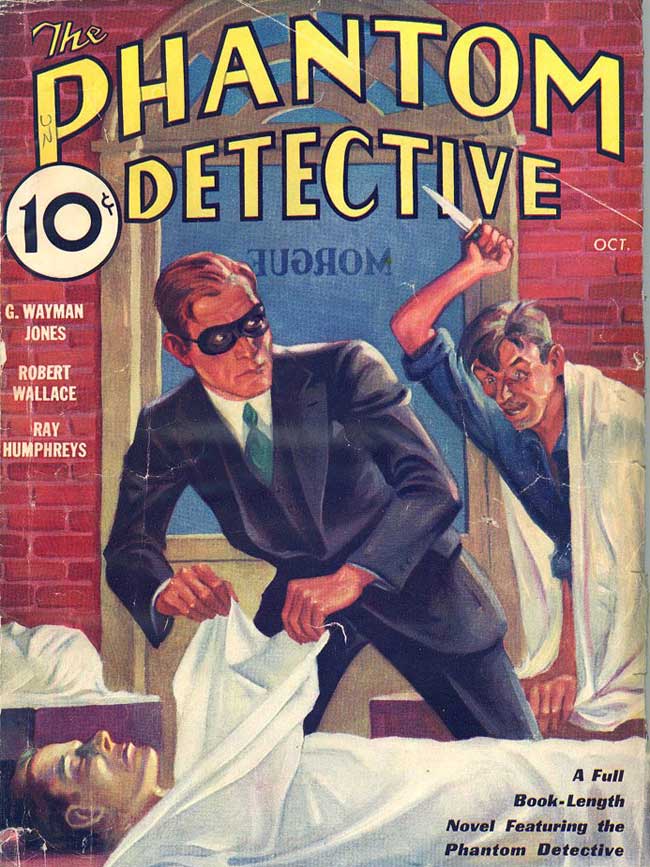
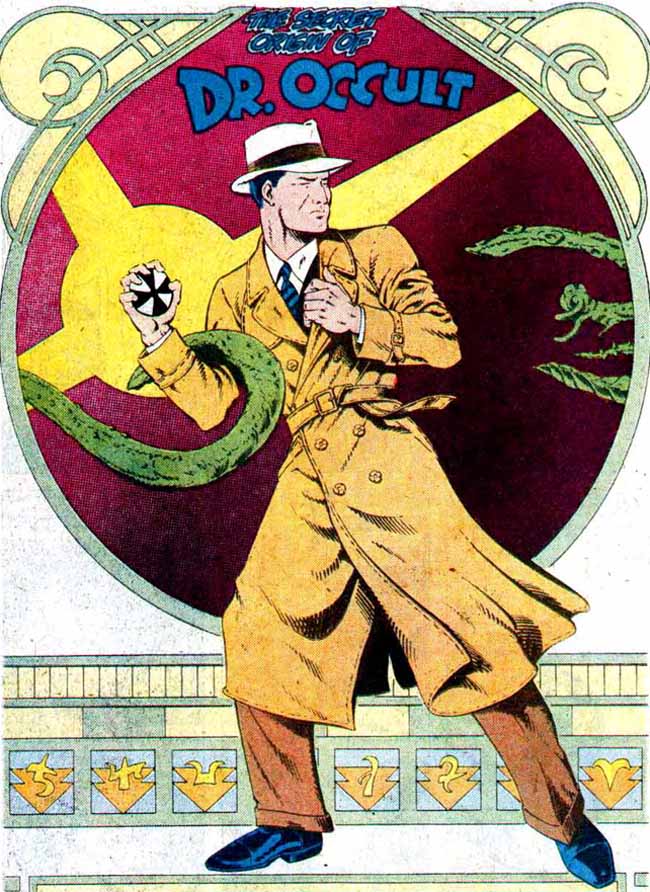
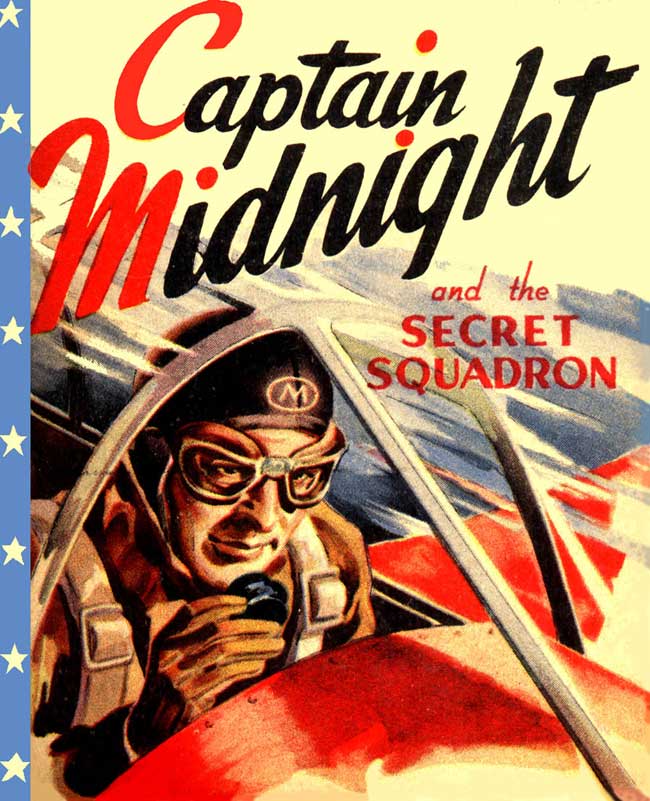

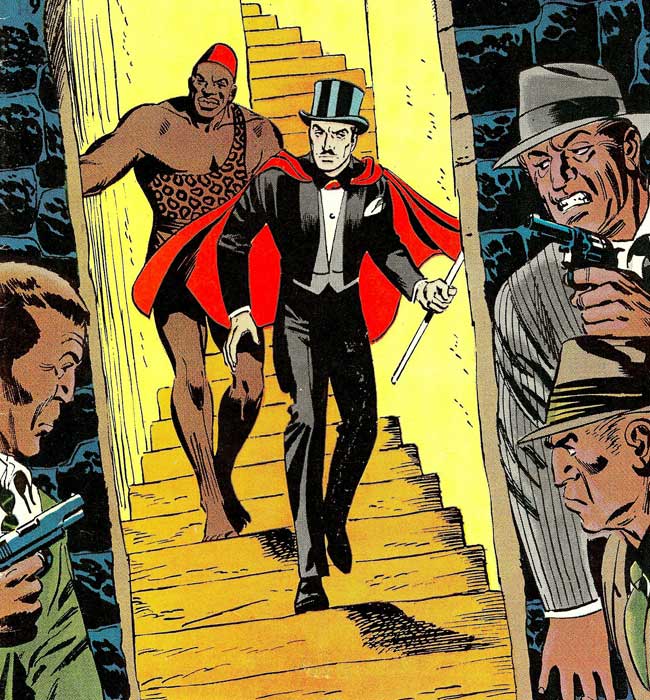
6 Comments
I did feel like there should be a Gilgamesh spot on the list. But if the list was done on that time-scale it would be a herculean task to make.
So… never mind that.
However, I see your “The Scarecrow” and I raise you Spring Heeled Jack!!
Not the urban myth/villain, but the more heroic penny dreadful character he inspired.
“Spring-heel’d Jack: The Terror of London” (Probably by Alfred Burrage) published 1878 or thereabouts.
Masked aristocrat acting as a vigilante, using gadgets, an underground lair and decked out in a scary dark costume similar to a winged devil. Before Zorro, The Phantom, The Shadow, The Scarlett Pimpernel or The Scarecrow. Hell, before Dracula even.
And before you bring up the the count of Monte Cristo (rich vigilante), Robin Hood has them all beat as far as vigilante noblemen with secret identities go. But I’d say “Jack” started what The Scarcrow continued and Batman ended, if that makes any sense.
On the other side of the coin we have Philip Wylie’s Gladiator. 1930. Before Doc Savage and a lot closer to the Golden Age Superman as far as his abilities go. But you definitely have him beat with Popeye. 1929.. you learn something new every day.
Gilgamesh is one of those Ur-examples that almost fit on every list.
Spring-Heeled Jack is a great call!
I’m pretty sure Gilgamesh joined the Avengers during the Inferno event
Yes and no. The Forgotten One, an Eternal said to have inspired the myth of Gilgamesh joined, but given that the Eternals include guys like Thena, Zuras, Makkari and others who are shown to have ACTUAL deific counterparts in the Marvel Universe, I have to put an asterisk next that that one…
Glad to see Popeye on the list. And he was referred to at different times before Superman as the man of iron and I think a man of steel as well.
Bring back the Crimson Clown! I think he’d be a great revival ala the dynamite bunch